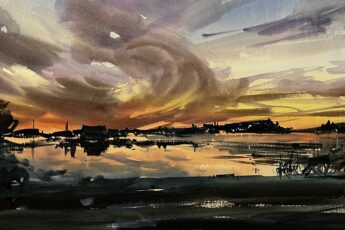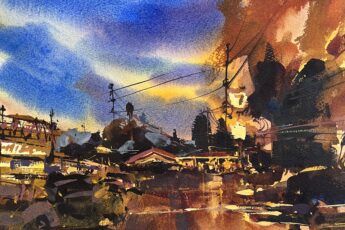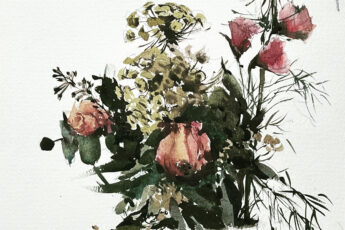This blog post is a review of Marc Taro Holme’s latest self published monograph.
I read Marc’s monograph last week and was blown away. If the act of doing art or watching art opens you up, then, you will feel this book and its artwork acutely. Marc has a straightforward way of expressing despondency. It does not come across preachy nor does it come across so far removed from reality that we can read it and shake off the feeling of impending environmental crash that Marc graphically portrays. If you are reading these few lines and are getting worried, you are getting the tone of this book. The imagery is strong and evocative. It is done masterfully and succeeds in encapsulating the reader in the mood it permeates. I understand why Marc calls this publication fit for art collectors. It feels it’s a piece of his journey that we get to experience alongside. Marc and I spoke on the phone as I asked him some pointed questions about his process and conclusions. This Q+A has informed my review and I have sprinkled the appropriate insights along with excerpts from the book. This review and similarly, the book; reveals itself to be a conversation you have either with a good friend or yourself.
-excerpt from Apocalyptic Variations
“The works in the slim volume..are an attempt at a total immersion in painting as a performance. an unconscious, instinctive, reactive openness to the behavior of the pigment and water.”
Marc had been studying the state of the environment and immersing himself in the subject, allowing the subject to effect the state of his mind – like a mental marination – which would then affect his style and topic of paintings. The painting titles came after the work itself was done. He thinks that having a title and fitting a a painting to it, makes it stiff and overwrought. This approach of ‘internal voyages’ feels like a permission we all now have to go draw wherever our mind will let us.
From pictures of ocean, to deserts to green snow, Marc paints complex watercolors without overworking them. He uses digital thumbnails akin to the Japanese Notan sketches and uses these monochromatic crutches to build larger, full color works. The choice of color is again a reflection of his mind and works to breath more emotion into each piece.
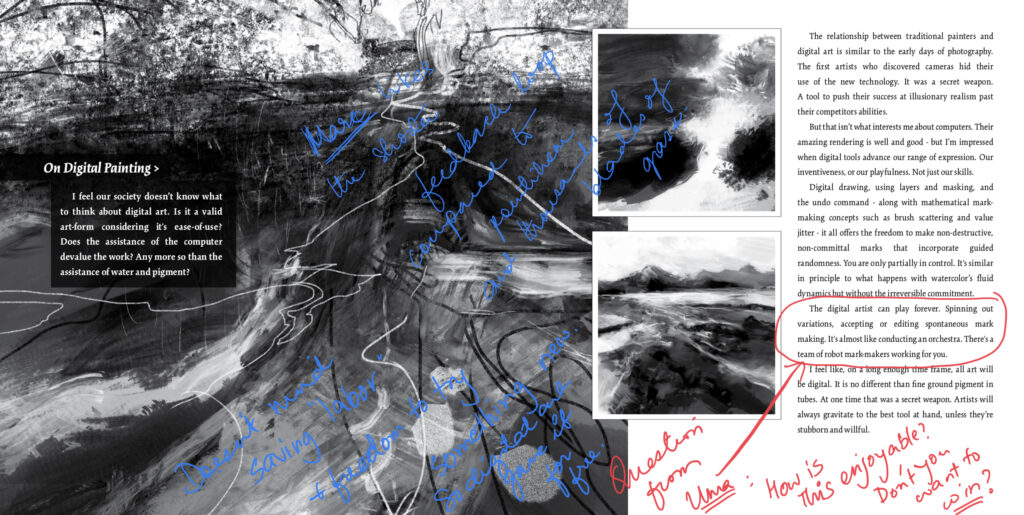
Q: Marc, did you feel the thrill of painting with digital without having to worry about drips, knowing well that each stroke could be undone?
A: Having a digital medium for making my thumbnails shortened the feedback loop, in fact. If I had wished to give a texture using dots, Pointilists would’ve taken much longer compared to some of the digital brushes that can render texture infinitely faster. Plus, the idea of saving labor translates to freedom to try something new.
It made me wonder, Marc, much of the momentum of history that you talk about in the book comes from our way of living of instant gratification. Do our digital tools then aid us or hasten us to our soulless end?
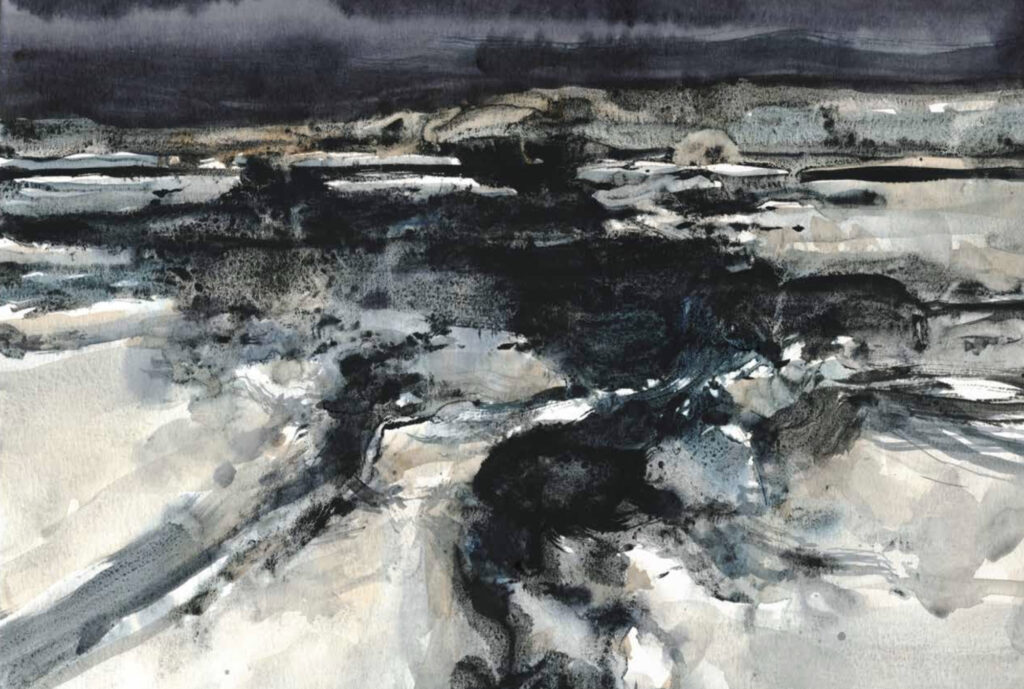
The book has close ups of treatments, B+W studies and full page color plates that are strong stand alone but stronger as a group. See the page on All Water in the World is Connected
His skills of tabulating the world around him via urban sketching and his work as an art director for the fictitious gaming world come together in this book to represent a story of the world and leaves us with a hint of hope at the end, with rebirth for a new age. You’ve got to read it to feel the sense of hope and allow yourself to have such a mental journey to see if you arrive at the same conclusion as Marc does.



